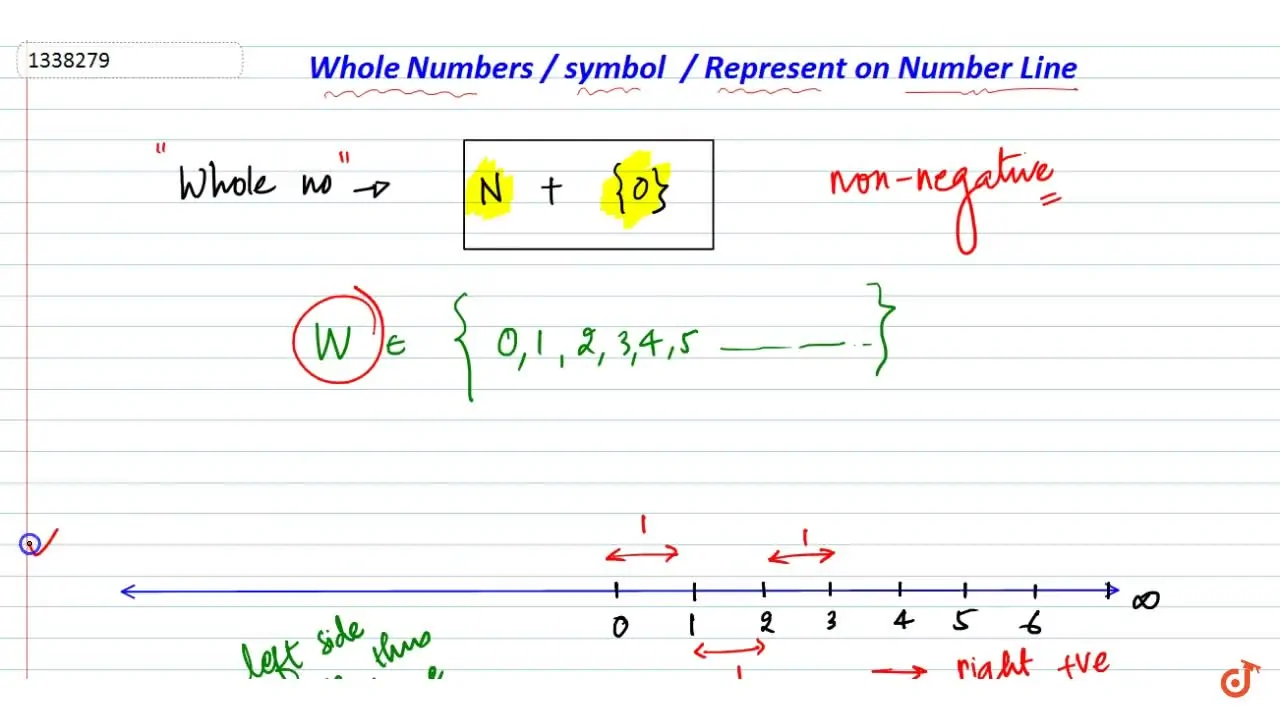What is Whole Number; symbol and representation of Whole Number on Number line?
Whole Number
In this chapter, we will concentrate on the whole number as well as its symbol and representation. We will further discuss the whole number properties along with some examples to get a good idea about it.
What is Whole Number?
The numbers that do not have any fractions and also a collection of zero and positive numbers are called whole numbers. It is represented as “W” where the set of numbers are 0, 1, 2, 3, 4, 5, 6, 7,….) As you can see that these numbers are positive, which also includes zero where it does not include decimal parts or fractional. For example. 2/3, 4.5 and 6.8 are not whole numbers. Addition, subtraction, division, multiplication are all possible with whole numbers.
What are the Whole Number Properties?
It is on the arithmetic operations such as addition, subtraction, multiplication and division that the properties of whole numbers are based on.
- If two whole numbers are multiplied or added, then it will give a whole number itself.
- If two whole numbers are subtracted, then the result might not be a whole number as it can be an integer as well.
- If two whole numbers are divided, then the result might appear in the form of fraction.
properties of whole numbers below:
Closure Property:
They can be closed under both addition and multiplication, i.e., if a and b are two whole numbers then a. b or a + b is also a whole number.
Commutative Property of Addition and Multiplication:
The product, as well as the sum of two whole numbers, will be the same. It does not matter which order they are added or multiplied in, i.e., if a and b are two whole numbers a + b = b + a and a.b = b.a
Additive identity:
Its value remains unchanged when a whole number is added to 0, i.e., if a is a whole number then a + 0 = 0 + a = a
Multiplicative identity:
When a 1 is multiplied to a whole number, its value remains unchanged, i.e., if a is a whole number then a.1 = a = 1.a
Associative Property:
When whole numbers are being multiplied or added as a set, they can be grouped in any order, and the result will be the same, i.e. if a, b and c are whole numbers then a + (b + c ) = ( a + b) +c and a.(b.c) = (a.b).c
Distributive Property:
Suppose, a, b and c are three whole numbers, then the distributive property of multiplication over addition will be a. ( b + c ) = ( a.b) + ( a.c).
Multiplication by zero:
When 0 is multiplied to a whole number, the result will always be 0, i.e., a.0 = 0.a = 0
Division by zero:
Division of a whole number by o is not defined, i.e., if x is a whole number then x/0 is not defined.
Related Videos:
- What is Rational Number?
- What is Natural Number;symbol and representation on number line
- Number line and Its importance
- Representation of irrational number on number line
- Definition and representation of dfferent type of integers
We will now look at some of the examples of whole numbers that would prove to be quite helpful for the students.
Question 1: Solve 20 × (10 + 10) with the use of the distributive property.
Solution: According to the distributive properties of the whole numbers:
x × (y + z) = (x × y)+(x × z)
= 20 × (10 + 10)
= (20 × 10) + (20 × 10)
= 200 + 200
= 400
This implies 20 × (10 + 10) = 400
Question 2: Solve 30 × (5 + 10) with the use of the distributive property.
Solution: According to the distributive properties of the whole numbers:
x × ( y + z ) = (x × y)+(x × z)
= 30 × (5 + 10)
= (30 × 5) + (30 × 10)
= 150 + 300
= 450
This implies 30 × (5 + 10) = 450.
Important Chapters:
Similar Questions
Representation of whole numbers on numbers line
View SolutionRepresentation of irrational number on number line.
View SolutionWhat is Natural Number;symbol and representation on number line
View SolutionRepresentation of rational numbers on the number line
View SolutionRepresenting whole numbers by line segments
View SolutionRepresenting whole numbers by triangles
View SolutionEvery whole number is an integer.
View SolutionThe smallest whole number is
View SolutionAll whole numbers are integers
View SolutionWhat is the smallest whole number?
View Solution


